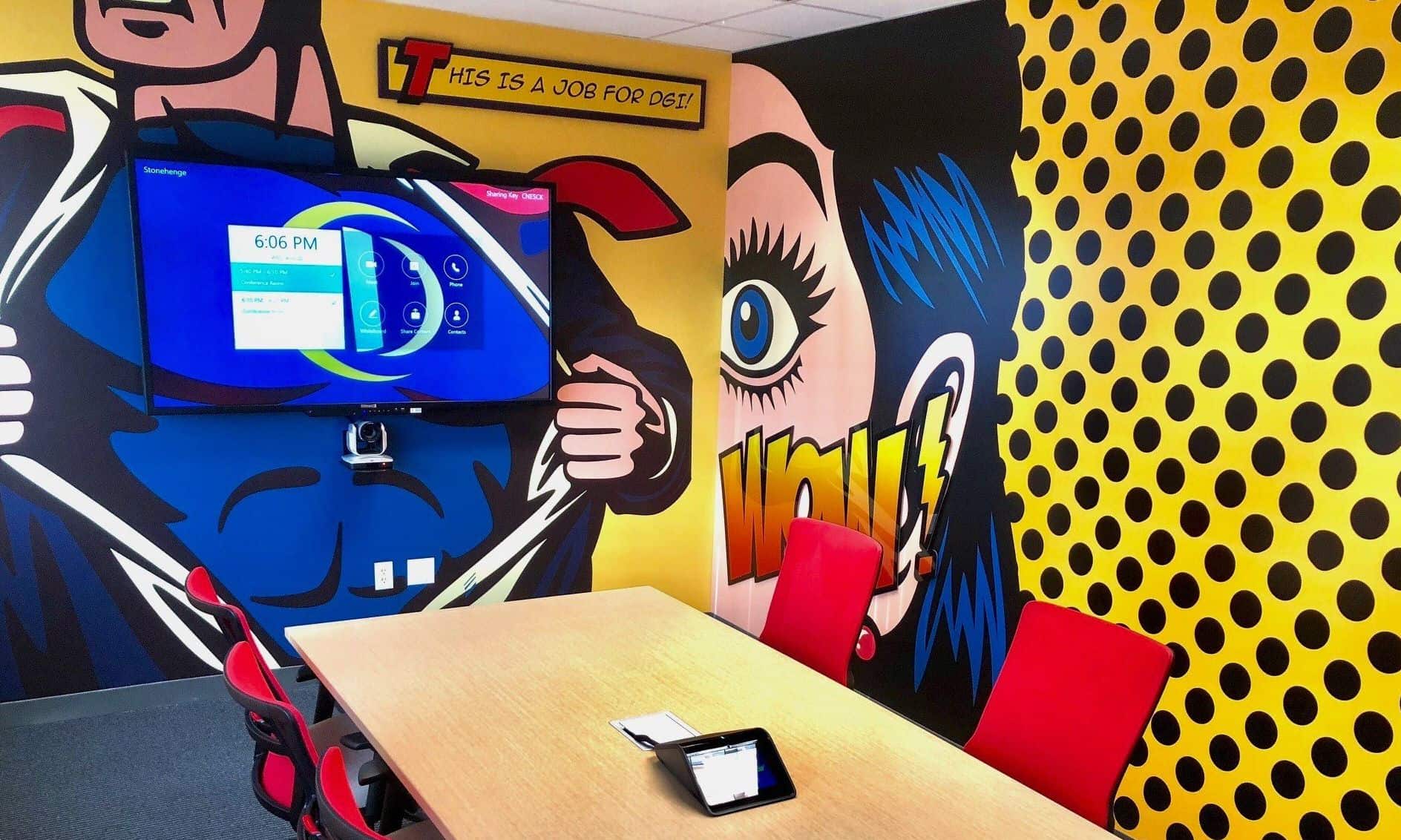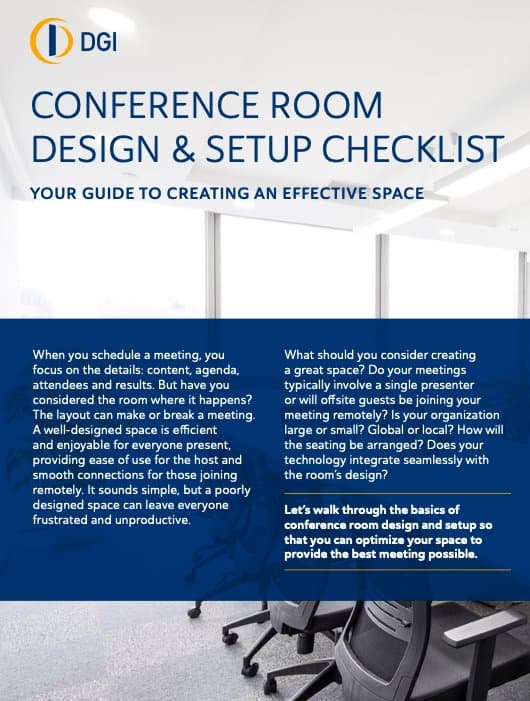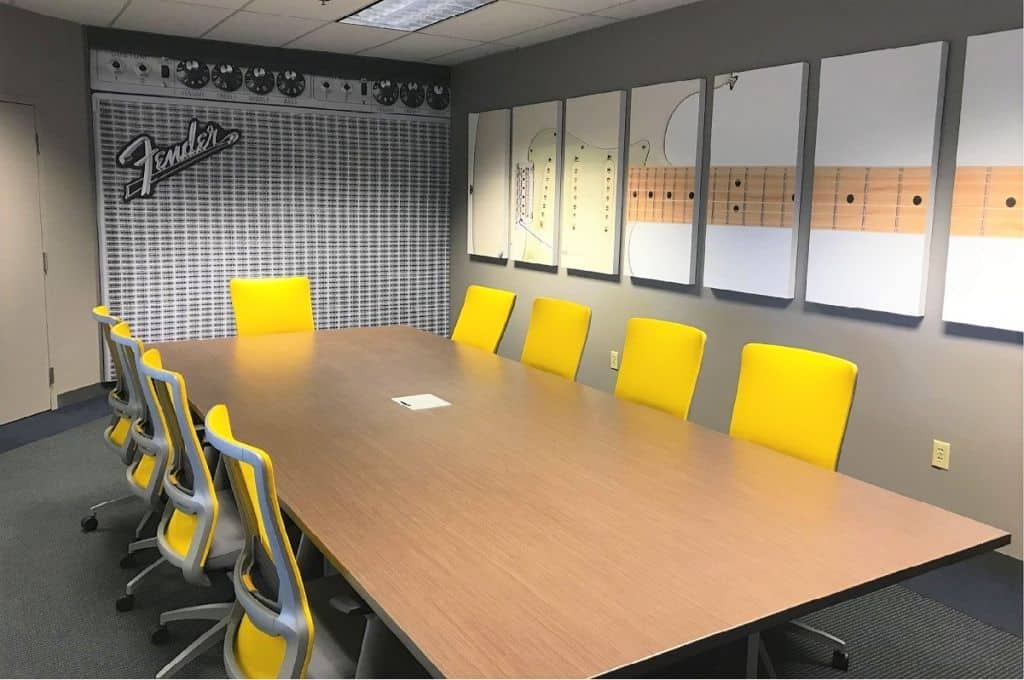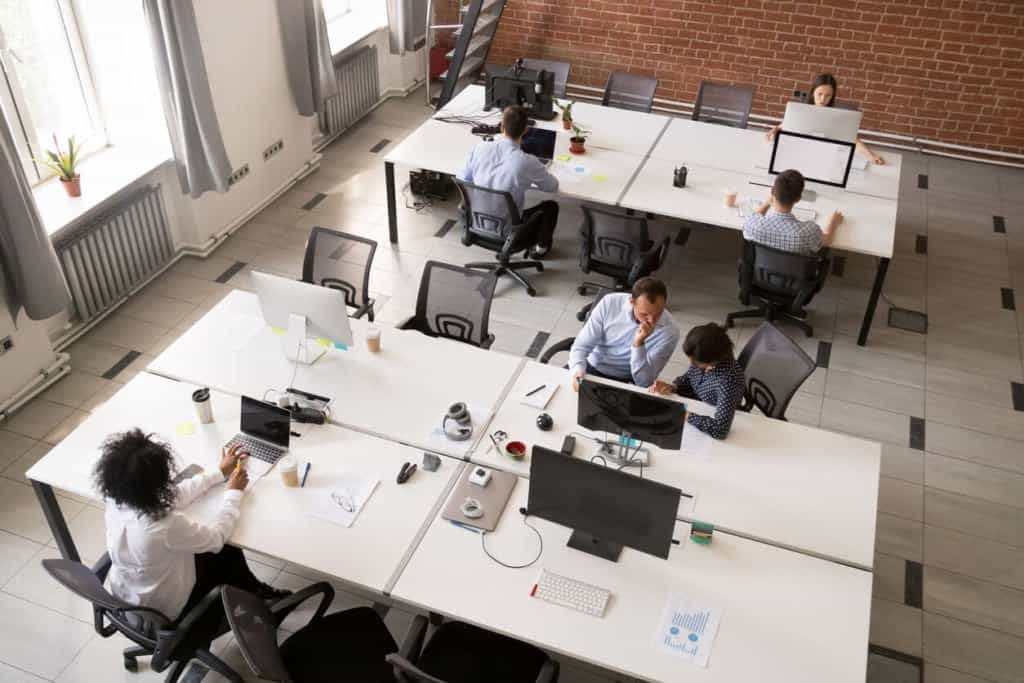Nothing inspires debate among leaders and employees as much as whether to have an open or a traditional office.
Did we really love cubes or traditional window offices that much? With commercial real estate prices at all-time highs, maximizing space is at a premium and there are only so many corners for “corner offices.” But with unemployment at all-time lows, the wrong office configuration may hurt your ability to recruit and retain key employees. Here are some tips to help your office design stay ahead of the haters.
What do you do?
Your industry and the function of your location play key roles in the decision of open or traditional.
Let’s say you’re in a conservative field like accounting, law or financial services. In this case, clients and employees will likely expect a more traditional space. Similarly, if your firm deals with a lot of client interaction that requires privacy for calls or meetings, offices with doors make a lot of sense.
On the other hand, if collaboration is a key part of your culture, with colleagues bouncing from desk to desk, an open design may be more effective.
How often are employees in the office?
More and more, employees are working from home or remotely. Global Workplace Analytics’ research found that 50% of the US workforce holds a job that is compatible with at least partial telework and approximately 40% of the workforce works remotely at some frequency. Furthermore, 80% to 90% of the US workforce says they would like to telework at least part-time.
Empty offices or cubes are not an efficient use of your real estate budget. Some companies employ “hoteling,” where the office has many shared desks. Many roles require a laptop and a phone with little need for a landline or files. As long as the flow of employees at home and work is in balance, an open design can make sense if you have employees frequently working remotely. Unified communications systems with partners like Zoom enable seamless transitions from home to car to airport to office.
What do your employees expect?
The reaction to your design may depend on the past design or the typical office design for the industry. Going from a traditional office to a full open design may be too much of a shock to the system, engendering unhappy reactions from the team. Your company may need to create additional incentives or perks to help cushion the blow of such a drastic change.
Some industries — like tech startups — have an expectation of atypical office space. An open design is almost preferred for these industries, including perks like ping pong, nerf guns and beer kegs. Sounds crazy, but in some areas and companies those perks are the most valued part of their open design.
How does this rank vs. other priorities?
Changing your office layout is a significant investment of time and money. While growth or a move may necessitate a change, the leadership team is still putting in effort agreeing on design choices. Even smaller investments can make a big difference in your overall space.
If you choose an open office, here’s how to make it work
Conference rooms are a key area where you can make your office space work, particularly if you have an open format. The first step is to make sure you have enough of them and a system to track booking them. Nothing is more detrimental to productivity than fighting over or searching for meeting space. It can hurt a team dynamic or give the wrong impression to a prospect, recruit or client.
The second step is to make your conference rooms engaging.
Check out some examples of how DGI has helped create exciting conference rooms here.
After conference rooms, a key next step is adequate sound proofing and masking. Open spaces often fail because it’s too darn loud. Productivity often needs a reasonable noise level. DGI can add the sound paneling and technology to reduce noise related issues in the workplace.
A workspace should be an expression of who you are as a company. Are you really drab, dysfunctional and outdated? Even if you’re not, your office may express that. At DGI, we help businesses large and small to design a workspace that employees love to work in. Whether traditional or open, talk to us about how to make your space the best it can be in 2024.



